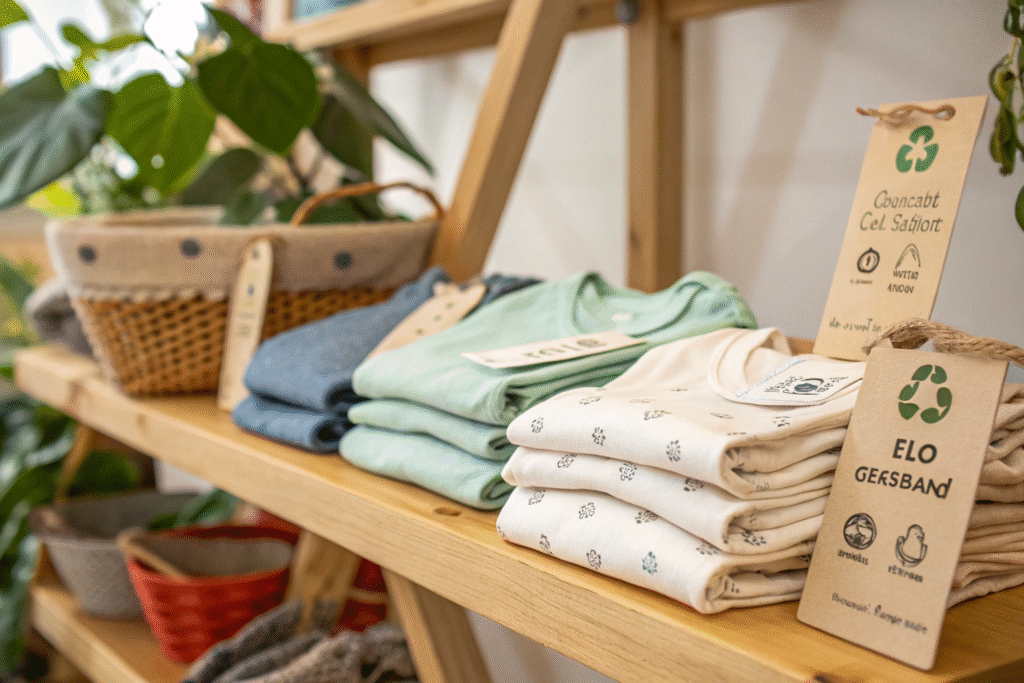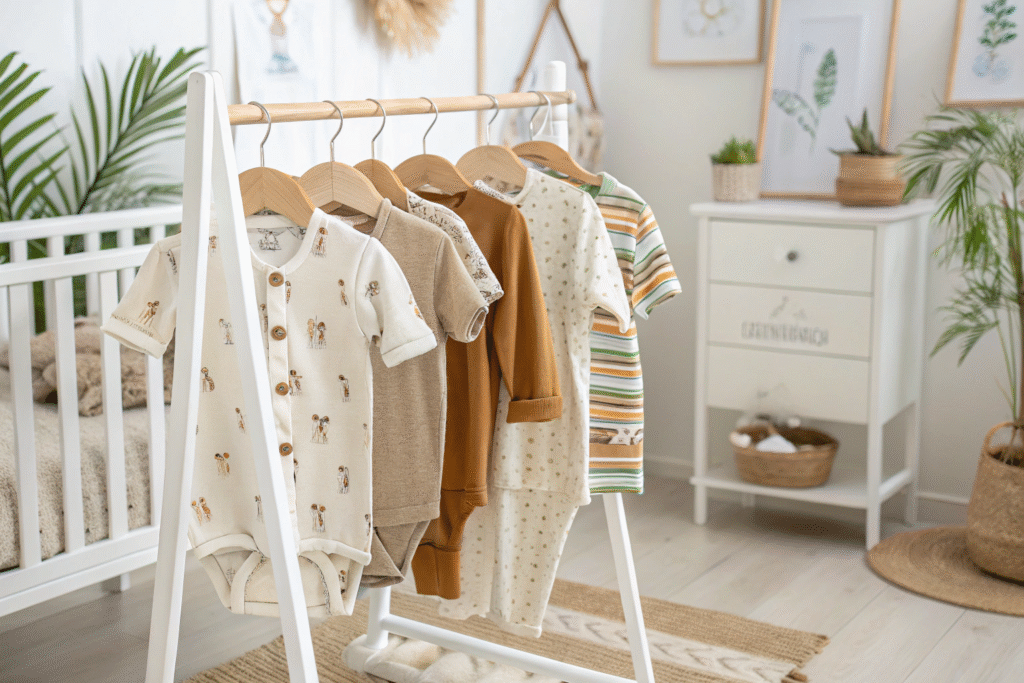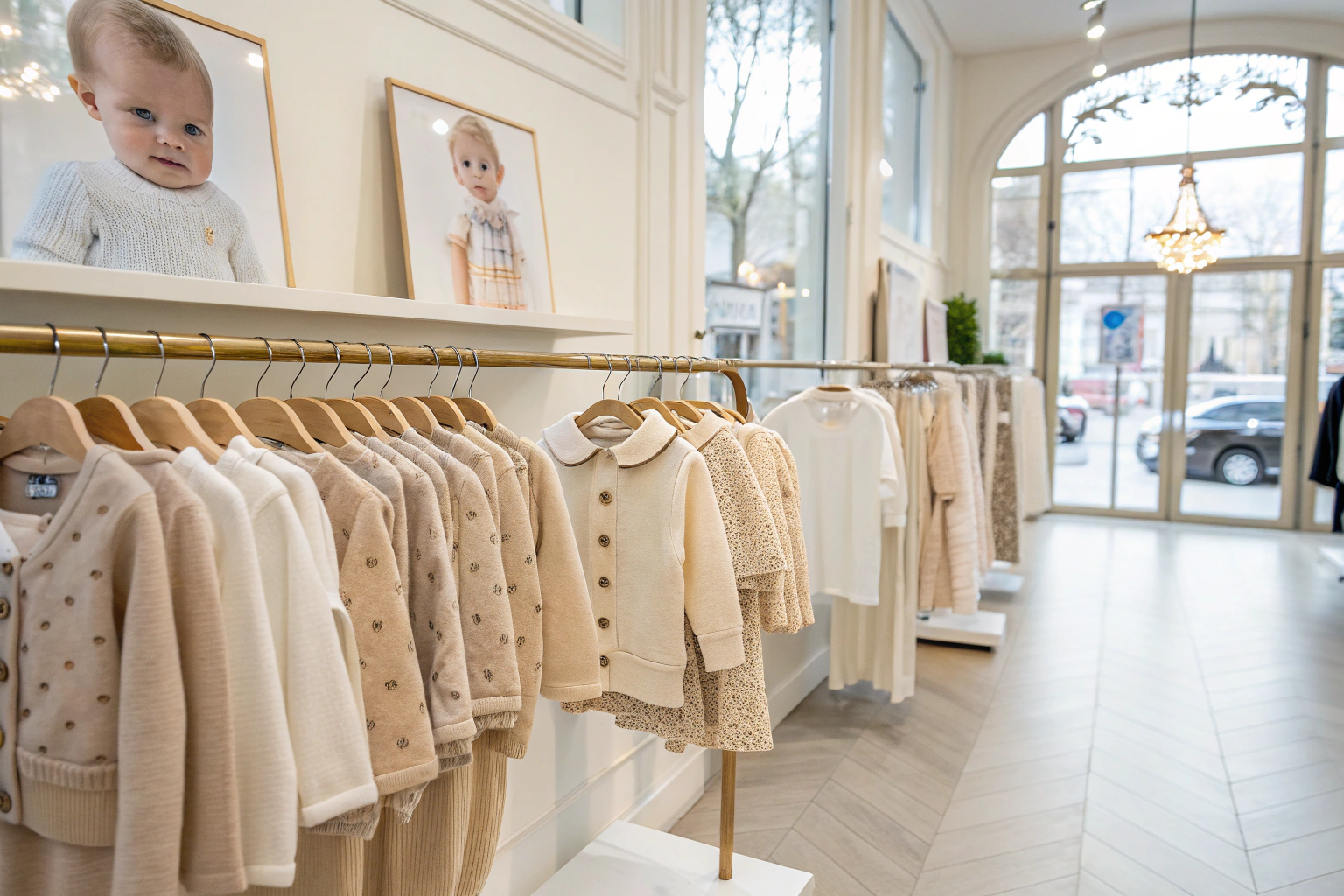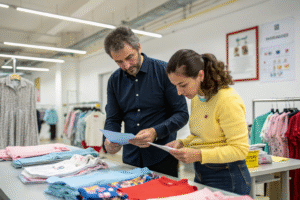As we head into 2025, the U.S. baby clothing market is undergoing a stylish transformation. Gone are the days of solely pastel colors and gender-stereotyped prints. Today’s parents are looking for a blend of fashion, function, and sustainability — and they're willing to pay a premium for it. This trend presents both a challenge and an opportunity for apparel buyers, brand owners, and distributors who want to stand out in the babywear space.
Sustainability, softness, and smart features are the keywords shaping the landscape. From organic fabrics to adaptive wear and multifunctional designs, the industry is evolving to meet the expectations of modern parents.
As a Chinese babywear manufacturer who has worked closely with top U.S. brands, I’ve seen firsthand the shifting demands. In this article, I’ll share the four most in-demand baby clothing trends dominating the U.S. market in 2025. Whether you're a sourcing manager or a babywear brand owner, these trends can shape your next best-selling collection.
Organic and Sustainable Fabrics Dominate Babywear Choices
The push for eco-conscious parenting is stronger than ever. U.S. babywear buyers are prioritizing sustainability over price alone, especially millennial and Gen Z parents who now form the majority of new moms and dads. They are increasingly rejecting petroleum-based fabrics and synthetic dyes.
Organic cotton, bamboo rayon, and GOTS-certified materials are leading the charge. These fabrics not only offer breathability and softness but also reduce the risk of allergies and rashes — a major concern for infant skin.

Why Is Organic Cotton a Must-Have Material in 2025?
Organic cotton isn't new, but its role in babywear has reached new heights. It’s grown without harmful pesticides and processed with fewer chemicals, making it the safest option for newborns. Plus, it aligns with popular certifications like GOTS (Global Organic Textile Standard), which retailers increasingly require.
The U.S. market is now filled with "clean" baby brands promoting their chemical-free promise. Major retailers like Target and Nordstrom are stocking only OEKO-TEX® or GOTS-certified infant apparel in select aisles, setting the standard for compliance.
How Can Manufacturers Prove Fabric Sustainability?
More brands are demanding verifiable proof of sustainability. As a factory, we’ve started providing digital traceability reports for each production batch. These include origin data, dye process certification, and packaging specs. Tools like QR code-enabled tags are also being embedded directly onto baby garments, linking to digital proof of eco-compliance.
Gender-Neutral and Minimalist Designs Are Winning Parents’ Hearts
Parents in 2025 are less interested in traditional blue-for-boys and pink-for-girls rules. Instead, they’re seeking gender-neutral designs that allow more versatility, sibling pass-downs, and broader appeal for gifting.
Minimalist patterns, soft color palettes, and unisex styling are ruling baby fashion racks. These designs reflect a modern, progressive parenting style and align well with high-end branding strategies.

What Colors and Patterns Are Trending for Neutral Babywear?
Expect to see warm taupe, sage green, soft oatmeal, and muted lavender. These tones work year-round and look premium. Patterns are shifting from cartoon-heavy prints to clean icons like clouds, moons, leaves, and subtle geometric shapes. Brands like Hanna Andersson and Primary are key adopters of this look.
These options also make inventory management easier for retailers. With unisex appeal, leftover stock from one season can easily be relisted or rebundled for the next.
Do Gender-Neutral Styles Affect Sizing or Fit?
Yes — many buyers now request "relaxed fit" specs to allow the garment to stretch over several growth stages. We are developing 2-in-1 onesies and rompers with convertible sleeve/leg designs that adjust from 3M to 6M with one fold. This trend not only satisfies minimalism but also aligns with slow fashion values by reducing product waste.
Smart Babywear Features Add Functionality and Peace of Mind
Technology is quietly entering babywear, not just in gadgets but in how clothes function. In 2025, U.S. parents want apparel that does more than dress their child — they want garments that communicate, protect, and simplify care.
Multifunctional closures, fabric innovations, and embedded information tags are becoming mainstream.

What Are the Most Popular Functional Features?
Magnetic snap closures have become a bestseller — they save time and avoid skin pinching. Moisture-wicking inner linings, UV protection finishes, and built-in temperature-indicating patches are now being adopted in higher-end product lines.
Retailers also seek "easy wash" instructions printed via QR code labels — a growing requirement as new parents prefer scan-and-go guidance. It also reduces tag clutter, enhancing the minimalist design.
Can Smart Features Be Affordable in Mass Babywear?
Yes. At our factory, we’ve integrated color-sensitive temperature threads and magnetic fasteners in our ODM programs for U.S. clients — all under $0.60/unit additional cost. With scalability, these features no longer belong just to premium brands. The ROI is clear: higher resale value, fewer returns, and better parent reviews.
Seasonal Versatility and Layering Styles for Changing Climates
American weather is increasingly unpredictable, and so is how parents shop. Instead of buying by seasons, many now choose garments that transition across spring to autumn, or from indoors to outdoors.
Layering systems and convertible designs are fast becoming must-haves. This is especially true for parents in coastal or midwestern states who face wide temperature swings.

What Are Key Garment Combinations for Year-Round Wear?
Babywear collections in 2025 focus on layering packs: a cotton bodysuit, a knit cardigan, breathable leggings, and a lightweight cap. This allows warmth control without thick insulation. Brands like Kyte Baby have seen success with bamboo jersey layers that regulate body temperature well.
Convertible options — like footie rompers with fold-over sleeves or jackets with detachable hoods — are hot sellers for babywear distributors. These maximize use while minimizing storage and spending.
How Should Manufacturers Adapt for Seasonal Flexibility?
Factories must rethink fabric weights and trims. We’ve started offering seasonal “hybrid” SKUs — midweight interlock fabrics, soft fleece-lined collars, and brushed terry for mid-temp zones. By offering SKU bundles and layer-ready collections, brands can optimize for both retail shelving and DTC platforms without overproducing.
Conclusion
The U.S. baby clothing market in 2025 is driven by conscious, stylish, and tech-aware parenting. To succeed, buyers need to prioritize organic materials, embrace gender-neutral minimalism, innovate functionality, and offer layer-friendly versatility.
At Fumao Clothing, we don’t just follow these trends — we engineer collections that lead them. Our role is to help brands reduce risk, speed up development, and deliver standout products that parents trust. If you're sourcing from Asia, now’s the time to align with factories that understand these real demands — and deliver on them consistently.










